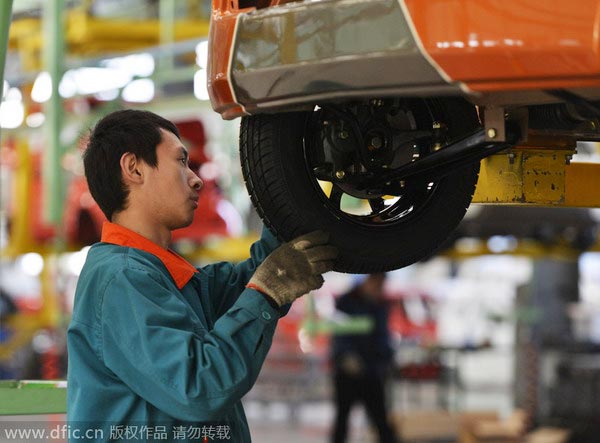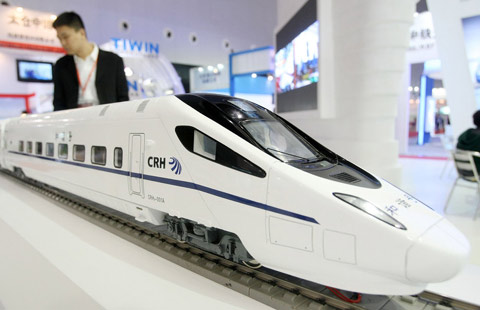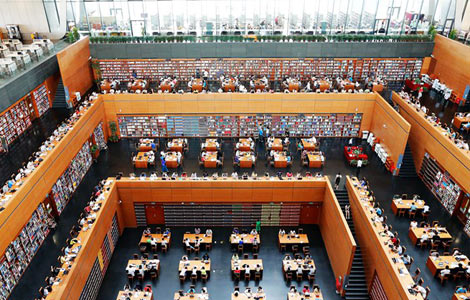Economists favor reducing GDP target to 6.5%
Updated: 2015-10-19 06:45
By CHEN JIA(China Daily)
|
|||||||||||
 |
|
A Chinese worker assembles a new energy car on the assembly line at an auto plant in Zouping county, East China's Shandong province, Dec 16, 2014. [Photo/IC] |
A further cut in GDP growth is being advised by economists for China's 13th Five-Year Plan (2016-2020) to pave the way for more reforms and the switch to a consumption-driven economy.
They propose that the annual GDP growth target should be cut from about 7 percent to 6.5 percent.
Some economists even see short periods of 6 percent growth as tolerable.
The ideas are being floated ahead of a top leaders' meeting later this month.
Economists said there is no need to fear a further slowdown. Even as year-on-year GDP growth falls to 6.5 percent, based on a total of 63.65 trillion yuan ($10 trillion) last year, this still represents a rise of more than 4 trillion yuan, more or less the total of the nation's economy in 1994, or that of Switzerland, the 20th-largest economy in the world.
In March, the government lowered the national GDP growth target of 7.5 percent last year to "around 7 percent" this year to allow the country to shed unwanted manufacturing capacity and for its transition from an export-led growth model to a consumption-driven one.
The economy grew by 7 percent in the first two quarters of the year, while many analysts are predicting slower, perhaps about 6.8 percent, growth in the third quarter.
Slower GDP growth does not mean a weaker economy, said Yu Bin, an economist with the State Council Development Research Center, a government think tank. It is only natural because the service industry is comprising an increasing share of the economy.
"The service industry generally has a lower demand for capital investment than manufacturing industry, and inevitably when translated in terms of GDP growth, you get a smaller figure," Yu said.
According to the government, in the first half of this year, the service industry provided 49.5 percent of China's GDP, up from 48.1 percent last year and 47.6 percent in 2013.
In contrast, manufacturing industry's share was 43.7 percent in the first half, down from 47.1 percent last year and 48 percent in 2013.
The other source contributing to GDP is agriculture.
According to an economic outlook from the Chinese Academy of Social Sciences, in the five years from 2016 the nation's potential growth rate could range between 6 and 6.5 percent a year.
But Li Yang, a leading economist at the academy, said a lower growth target should have a "bottom line" as well, to avoid social turbulence, financial crises, or a major contraction in the jobs market.
Some economists suggest that the "bottom line" should be 6 percent, while others prefer a higher level.
Zhang Xiaoqiang, vice-chairman of the China Center for International Economic Exchanges, said China could achieve its long-term promise to double its GDP as long as its average annual GDP growth reaches 6.53% in the next five years.
Zheng Yangpeng contributed to the story.
Related Stories
Chinese entrepreneurs voice confidence in Chinese economy 2015-10-16 09:39
Chinese investments in Africa help revitalize Africa's economy 2015-10-14 10:30
Dairy farmers in New Zealand hit by China's slowing economy 2015-10-12 07:56
Dual Accounting Methods of GDP and GEP: Pilot Practice by Yantian District in Shenzhen 2015-10-08 11:20
Big picture needed on GDP growth 2015-09-26 08:30
Today's Top News
Students talk of hopes for Xi's visit
Royal family to gather in strength for Xi
Xi pledges stronger support to rid all Chinese poverty
Xi's trip to herald 'golden decade' for relations
Wanda's Wang again becomes richest Chinese
Ex-NBA star Odom reported critical, Kardashian at his side
Country house to add English tradition to Xi, Cameron meeting
Most Chinese cities failing air quality standards: Report
Hot Topics
Lunar probe , China growth forecasts, Emission rules get tougher, China seen through 'colored lens', International board,
Editor's Picks

|

|

|

|

|

|






